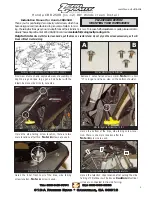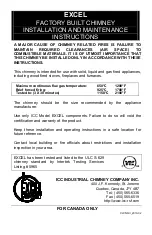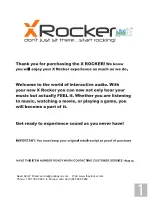
WWW.BALTIMOREAIRCOIL.COM
10
Flume Box Installation
1. Position Cell #1 on the unit support and bolt in place. Cell #1 will have a factory
installed flume box bolted onto Face B or Face C.
2. Wipe down the mating surface on the outer, protruding end of the flume box and apply
a layer of flat butyl sealer tape (BAC Part #554000) around the face of the flange over
the centerline of the holes. Do not overlap or stretch too thinly at the corners. When it
is necessary to splice the butyl sealer tape, be sure to press the two ends together to
form a smooth, continuous strip. See
Figure 12
.
3. Apply a second layer of butyl sealer tape over the first layer following the same
procedure.
4. Assemble Cell #2 just adjacent to its final location. Wipe down the mating surface
adjacent to the flume box opening to remove any dirt or moisture.
5. Position Cell #2 on unit supports. Using drift pins to ensure alignment, draw
Cell #2 tight against the flume box, ensuring that the spacing between the cells at the
bottom basin flange is 3” on Face A-B, 5” on Face C-C.
6. As illustrated in
Figure 13
, insert 3/8” x 1 1/4” thread cutting screws in each
hole from the flume box into the basin wall and tighten. For basins with TriArmor
®
Corrosion Protection System and stainless steel basins, bolt strips are provided in
lieu of individual thread cutting screws. For TriArmor basins only, a backing plate is
provided and must be installed inside of Cell #2, as seen in
Figure 14
. Secure using
the provided hardware.
NOTICE:
If the backing plate is not
properly installed, the TriArmor
®
Corrosion Protection System
warranty will be void.
NOTE:
If the unit is provided with
a positive closure plate requiring
installation, go to “Positive Closure
Plate Installation” on
1
prior
to installing flat washers and wing
nuts.
Figure 13.
Thread Cutting Screw Pattern for Flume Box
Detail A
Figure 12.
Flume Box Butyl Sealer Tape Application
3”
or
5”
Figure 14.
Backing Plate Installation













































